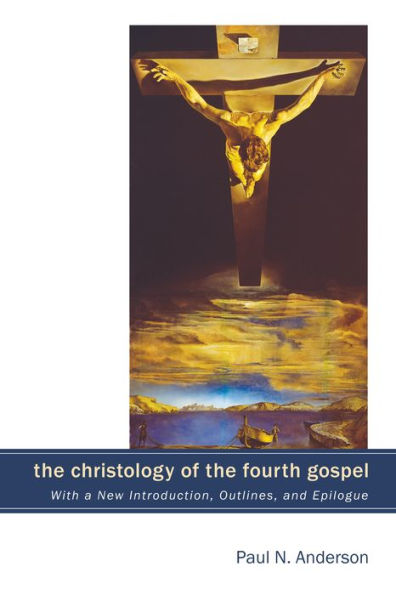Table of Contents
Foreword D. Moody Smith xxi
Preface to the Third Printing and Acknowledgments xxv
Abbreviations xxviii
List of Tables xxxii
A New Introduction and Outlines xxxv
A A New Introduction xxxvi
B Developments in Thought over the Last Decade xxxvii
1 The Epistemological Origins of John's Christological Tensions xxxviii
2 The Johannine Dialogical Situation-In Longitudinal Perspective xl
3 The Emergence of a Bi-Optic Hypothesis-A Larger Theory of Gospel-Tradition Interfluentiality xlii
4 The Christ of Faith, the Jesus of History, and the Gospel of John xlvi
C The Dialogical Autonomy of the Fourth Gospel li
1 Literary Levels of Dialogue liii
2 Historical Aspects of Dialogue liv
3 Theological Modes of Dialogue Ivi
D Johannine Christology in Context lvii
E Outlining Approaches to the Johannine Riddles lx
Outline A A Two-Edition Theory of Johannine Composition lxi
Outline B A Historical Outline of the Johannine Situation lxiv
Outline C A Bi-Optic Hypothesis lxviii
A Charting of Johannine-Synoptic Interfluential Relations lxxiii
Outline D The Outline of Deuteronomy 18:15-22-The Religious Source of the Johannine Agency Motif lxxiv
Outline E The Epistemological Origins of John's Theological Tensions lxxix
Outline F Jesus in Bi-Optic Perspective: A Nuanced Proposal lxxxii
Bibliographic Appendix: Relevant works by Paul N. Anderson since 1996 lxxxv
Introduction: Johns Christological Unity and Disunity: Identifying the Options 1
Part I Three Relevant Surveys
Chapter 1 Recent Approaches to the Christology of the Fourth Gospel 17
A Comprehensive Overviews of John's Christology 18
B Text-Centered Approaches 19
CTheological-Christological Approaches 23
D Literary-Christological Approaches 26
E Historical-Chnstolagical Approaches 29
Findings 32
Chapter 2 A Survey of Significant Commentaries 33
A Rudolf Bultmann 33
B C. K.Barrett 36
C Raymond E. Brown 39
D Rudolf Schnackenburg 41
E Barnabas Lindars 44
Findings 46
Chapter 3 A Survey of Three Approaches to the Unity and Disunity of John 6 48
A Robert Kysar 49
B Peder Borgen 52
C C. K. Barrett 61
Findings 67
Summary of Part I 68
Part II The Unity and Disunity of John 6
Chapter 4 The Stylistic Unity and Disunity of John 6 72
A Stylistic and Linguistic Evidence for the Sēmeia Source 74
B The Style of the Offenbarungsreden Material and the Reordering of the Text 78
C The Contribution of the Evangelist 83
Findings 87
Chapter 5 The Relationship Between Sign and Discourse in John 6 90
A The Problem of Jesus' Answer 91
B The Problem of the Redundant Request 94
C The Discontinuity Between Sign and Discourse 97
Findings 107
Chapter 6 The 'Eucharistic Interpolation' 110
Excursus: What is Meant by 'Sacrament'? 112
A Was the Evangelist an Anti-sacramentalist? 115
B Ignatius of Antioch and the 'Medicine of Immortality' 119
C John 6:51c: Opening Sentence or Concluding Clause? 127
Findings 134
Chapter 7 The Dialectical Character of John 6 137
A FaithDevelopment and Dialectical Thinking 142
B Dialectical Thinking and 'Transforming Encounters' 148
C Rudolf Bultmann and Dialectical Theologizing 151
Findings 163
Summary of Parr II 166
Part III John 6: Three Levels of Dialogue
Chapter 8 Not an Attesting - Miracle…But a 'Testing' Sign (an Exegesis of John 6: 1-24) 170
John 6: l-24 (a translation) 171
Exegetical Notes 171
Discussion 183
Findings 392
Chapter 9 The Exhoration of the 'Two Ways' (an Exegesis of John 6:25-66) 194
John 6:25-66 (a translation) 197
Exegetical Notes 199
Discussion 210
Findings 219
Chapter 10 Returning the 'Keys of the Kingdom' to Jesus (an Exegesis of John 6:67-71) 221
John 6:67-71 (a translation) 226
Exegetical Notes 226
Discussion 232
Findings 249
Summary of Part III 250
Conclusion: On 'Seamless Robes'…and 'Left-Over Fragments' 252
Implications 263
Postscript 264
Appendices 266
I John's Exalted Christology 266
II John's Subordinated Christology 267
III Johannine Signs as Facilitators of Belief 268
IV Johannine Signs and the Existentializing Work of the Evangelist 269
V Realized Eschatology in John 270
VI Futuristic Eschatology in John 271
VII Philo's Use of Manna as a Secondary Text 272
VIII The Papias Tradition, John's Authorship and Luke-Acts 274
Bibliographies 278
I The Christology of John 278
II John 6 287
III The Sacraments in John 291
IV Johannine Christianity 293
V Interdisciplinary Resources 295
Indexes 297
I Scripture and Ancient Texts 297
II Names 316
III Thematic Index 320
Epilogue: Responses to The Christology of the Fourth Gospel and Continuing Inquiry 330
1 Consensus Appraisals 332
2 Majority Reports 336
3 Minority Opinions 339
4 Individual Comments 345
Epilogue: Responses to The Christology of the Fourth Gospel and Continuing Inquiry 330
1 Consensus Appraisals 330
2 Majority Reports 336
3 Minority Opinions 339
4 Individual Comments 345
5 Extended Engagements 351



